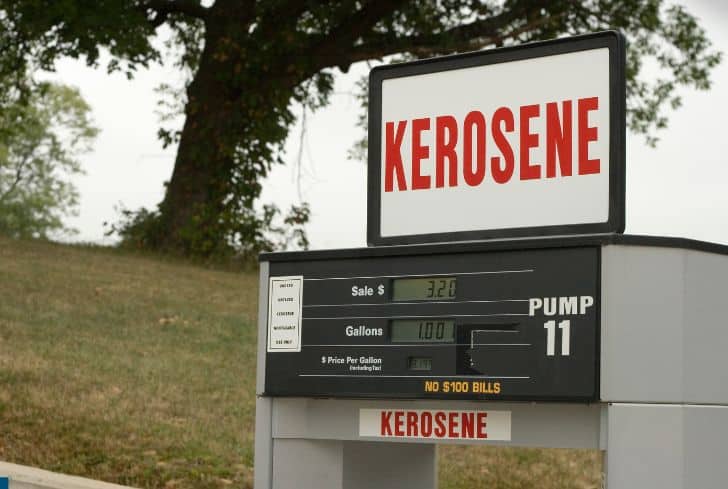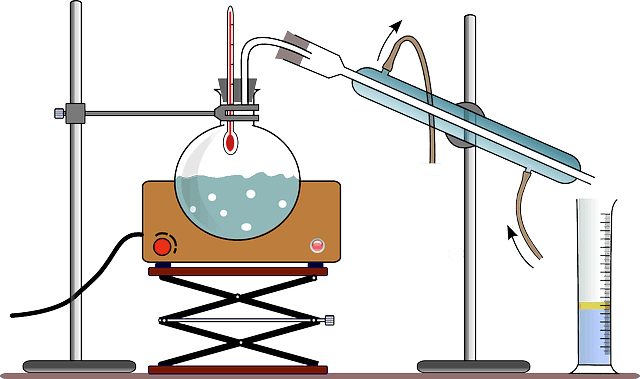Does Kerosene Go Bad? (And How Long to Go Bad?)

You can use kerosene for various household appliances, including heaters and lamps. The temptation to save a lot for the winter months may be strong. Your biggest concern, though, is whether or not you should store kerosene and for how long. Do you ever wonder, does kerosene go bad?
We answer the question of whether kerosene goes bad in this article. In addition, we’ll discuss kerosene’s properties and how to extend the life of your kerosene. Knowing whether kerosene has an expiration date and how to dispose of it properly would also be beneficial.
Read: Does kerosene Evaporate?
Can Kerosene Go Bad?
Stored kerosene does degrade over time. Condensation is the primary cause of kerosene degradation. Kerosene breaks down into condensation when it absorbs water, which encourages the development of bacteria and mold. Bacteria and mold growth leads to the formation of sludge-like substances in the kerosene.
It could be risky if you use bad kerosene because it will harm your appliances and reduce their performance.
Kerosene will still degrade due to oxidation even if it does not absorb water. It will begin to break down and finally create gum when exposed to oxygen. Gum is an unappealing grey mass that is very explosive, unstable, and sensitive. The mass could ignite quickly if a large enough spark happened nearby. An explosion will occur if you throw the spark inside the container. A spark will ignite the bulk into a fireball if the mass is not in a container.
Properties of Kerosene
Petroleum is fractionally distilled to produce the highly flammable liquid known as kerosene. It has a range of colors, from clear to a pale-yellowish streak, and is liquid at room temperature. Kerosene has the following properties that you should be aware of:
- Flashpoint: The flashpoint of kerosene is 100°F; however it can occasionally reach 185°F. The pressure applied to the kerosene will determine its flashpoint. For instance, its flashpoint is 149 °F at sea level and 100 °F at room temperature.
- Auto-ignition temperature: Kerosene has an auto-ignition temperature of 444°F. At normal air pressure, kerosene will readily ignite at this temperature.
- Boiling Point: Kerosene has a boiling point that fluctuates from 347°F to 617°F. But air pressure will affect the boiling point.
- Odor: Kerosene has a distinct pungent smell. When you open a kerosene container, a powerful smell hits you. However, odorless fuel, which you can only use as a stove fuel or a solvent, is already available.
- Solubility: Kerosene is soluble in other petroleum solvents but insoluble in water.
- Density: Kerosene has a density of 0.80 grams per milliliter at room temperature. Kerosene’s density and temperature almost certainly have an inverse connection; as its temperature drops, its density increases, and vice versa.
How Long Does It Take For Kerosene To Go Bad?
If properly kept, good quality kerosene will last between 2 and 5 years before going bad. After then, it will start to degrade and decompose. Kerosene will degrade and release poisonous gases. The breakdown will occur so gradually that it could be difficult to notice. When kerosene goes bad, it will not work with full efficiency.
You should calculate kerosene’s shelf life from the point of manufacture rather than the point of purchase. However, since it’s hard to know the manufacture date, proper storage is the key factor for prolonged shelf life. Kerosene will last longer, depending on how you store it.
Can You Make Kerosene Last Longer?
By ensuring that the kerosene container is airtight, you can extend the life of your stored fuel. Make sure you use an opaque plastic container. Use metal drums with clamp seals instead of plastic if you can’t find them. However, stay away from metallic drums composed of catalysts like copper. Such metals cause carbon deposits by destabilizing kerosene.
Kerosene shouldn’t be kept in stoves, heaters, or lamps. If kerosene is left in such containers, it will draw water and deteriorate. Kerosene from heaters, lamps, or stoves should be siphoned and placed in a sealed container if you want to preserve it. Do not forget to siphon kerosene outside on concrete.
Read: Does kerosene Freeze?
You can also add additives to kerosene to make it last longer. There are three types of additives:
- Antioxidant additives: They prevent oxidation in kerosene, which causes gum formation.
- Water dispersals: They draw water out of kerosene so microbes don’t grow. An example is HOT 4-in-1 Heating Oil Treatment found on Amazon.
- Biocides: They eliminate bacteria and mold, which mostly flourish in kerosene if it contains water. By adding biocides, you slow down the degradation process of kerosene. Use enough quantity to dissolve in the amount of kerosene you want to store.
Want to know the best fuel stabilizers:
Can You Use Expired Kerosene?
You can still use the expired kerosene, but it won’t work as well as new. You can do the following things to restore your old kerosene:
- Dilute the kerosene with fresh kerosene
Adding fresh kerosene dilutes the hazardous byproducts created in the already degraded kerosene.
- Add fuel stabilizer
Kerosene will remain at the top as it degrades, and water will settle at the bottom. Pour the kerosene from the top of the old container into a new one. To get rid of the muck, use several coffee filters. Most likely, the filtered sludge will contain water, mold, and bacteria.
To stop further degradation and enhance the performance of the kerosene, add a fuel stabilizer to your stored kerosene. You can do this every year of storage.
How To Tell If Kerosene Is Bad?
Kerosene does not carry an expiration date as most products do. Therefore it could be challenging to determine when it is past its prime. However, if you notice floating particles, you can know that your kerosene has gone bad. Your kerosene will become cloudy or yellowed due to the impurities. If you observe bubbles in kerosene, that’s a clear indication that your kerosene has gone bad.
Your kerosene has already started absorbing water if you observe bubbles. If your kerosene appears to be a little more yellow, that is another indication that it has gone bad. Kerosene that smells like gasoline or diesel most likely has gone bad.

How Long Should You Store Kerosene?
Kerosene shouldn’t ideally be kept in storage for longer than a year following purchase. You should use all your kerosene within three months after buying, particularly if your storage conditions are poor. Don’t store your kerosene from season to season. However, it is possible to preserve it for longer than that. But, you’ll need to store it correctly.
The main goal is to delay deterioration and disintegration. There are two things to consider when planning to keep your kerosene for a long time.
Storage Area
Kerosene must be kept in a dry, cool, and dark location. Keep your kerosene out of direct sunlight when you store it. It will degrade considerably more quickly under extreme heat.
Keep kerosene away from children, pets, and heat sources. The kerosene containers should be in a well-ventilated area. You shouldn’t store kerosene where it might easily pollute wells and water supplies because it is not environmentally friendly.
Storage Containers
Kerosene is typically purchased in containers that are meant to be stored even after being opened. You can buy opaque plastic containers if you don’t want to store the kerosene in the original container.
Kerosene is kept fresh for a very long time with the help of these containers. Additionally, they safeguard the kerosene to keep you and your house safe.
How To Dispose of Used or Expired Kerosene?
After taking the appropriate precautions, it is possible to use the used kerosene, although you might feel more comfortable throwing it away. Kerosene should be properly disposed of because it can be toxic. To protect the environment, avoid burying, spreading on the soil, or dumping kerosene down the drain.
The best way to recycle kerosene is to take it to a recycling facility near you. You can contact or check online with your neighborhood city office. There are collecting sites for household hazardous waste in some areas. They may operate them all year round, at specific times, or during particular days. Find out when it’s scheduled to happen nearby.
Before disposing of your kerosene as hazardous waste, you must make a few considerations.
- If you have different fuels, don’t mix them. Most hazardous waste collection facilities do not accept a mixture of different fuels.
- Keep the kerosene in its original container. Most collection facilities want to see the original label to know what they are dealing with.
- Instead of waiting for the collection facilities, you can call some gas stations and auto shops. While it may take some time, you will find one that will take your used fuel.
Conclusion
Even though you don’t like having to store kerosene, the cost always seems to go up right before winter. Storage may be your only choice if you want to save money on kerosene purchases and avoid making frequent purchases during the winter.
The good news is that we have provided you with tips on extending the life of your kerosene and identifying when it is no longer safe to use. If you see kerosene degrading, there are numerous ways to recycle and dispose of it. Kerosene storage doesn’t need to be a worry any longer.





